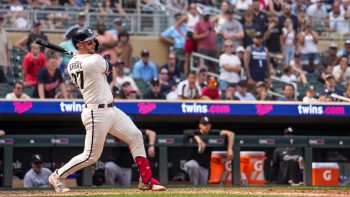
MLB’s new rules are drawing more fans to ballparks nationwide
MLB’s new rules are drawing more fans to ballparks nationwide

Major League Baseball plays its All-Star Game tonight in Seattle, marking the informal midpoint of the sport’s 162-game-per-team regular season.
MLB made some significant changes to its rules this year as it tries to reignite interest in a sport that’s drawn fewer bodies through the turnstiles in recent years. And so far, the numbers are moving in the right direction: Attendance is up nearly 9% overall, and 23 of its 30 teams saw an uptick in the number of fans year over year in the season’s first half, both promising signs for a league looking to bolster its brand.
Before MLB changed its rules, the game had an “aesthetic problem,” according to Scott Bush, the CEO of the Society for American Baseball Research, the result of “a lot of movement towards what’s known as three true outcomes,” Bush explained.
In other words, the ideal result of an at-bat was a walk, a strikeout or a home run.
“And because of that, things have gotten a little bit stale,” Bush said.
Plus, the games were getting long, averaging over three hours since 2016, according to MLB. And fewer fans were coming out to ballparks. Attendance peaked in 2007, and the league struggled to get people back in the stands after the end of pandemic restrictions. All those empty seats can have an impact on how fans think about the game.
“If you show up and there’s only 5,000 other people there, you kind of look around and go, ‘Why did I come here? A lot of other people chose not to come here, what should I be doing that someone else is doing right now?’” Bush said.
So before this season began, MLB made some drastic changes to its rules. To encourage more hits and base stealing, the bases are slightly larger and there are new restrictions on where infielders can stand. And biggest of all, the league added a clock. Pitchers now have 20 seconds at most to throw the ball. So far, it’s worked, said Marty Conway, an adjunct professor of sports and business at Georgetown University.
“Games have been cut by anywhere from 20 to 30 minutes per game,” Conway said. “I think people notice the fact that it’s just a better experience for the fan.”
And more fans are showing up in places like New York and Philadelphia, even in Kansas City, where the Royals have one of the worst records in baseball. At a recent afternoon game at Kauffman Stadium, Charles Bolden of Chicago said he loves the rule changes.
“I think it needed to be quicker,” Bolden said. “I think it’s getting back to the fundamentals of baseball. You’re seeing more stolen bases, and you’re seeing a faster-pace game, which is kind of where we’re at in 2023.”
Meanwhile, outside Nationals Park in Washington, D.C., 20-year-old Emma Barrett was keyed into one of the reasons the league added the pitch clock.
“I think that will definitely help, especially my generation,” Barrett said. “I think there tends to be a little stigma around baseball for being like four- or five-hour games. … I think it’ll draw in some of the younger crowd.”
For 28-year-old Amy Eckel of Alexandria, Virginia, who goes to several games a year, there’s another advantage to shorter games.
“I used to come home at, like, midnight because the games were running until 10 o’clock,” Eckel said. “And now it’s like, you’re home at, like, 9:30.”
Not bad if you’re watching the Nationals, who are well on their way to a fourth-consecutive losing season.
Baseball’s TV ratings seem to be climbing along with attendance. And that’s an important factor for teams, which rely on what Conway called a “stack of revenues.”
“You have media revenues, you have game ticket revenues, you have food and beverage, corporate sponsorship and all that,” Conway said.
Higher ratings could help teams negotiate better TV deals, and fewer empty seats during broadcasts just makes the sport look better, Bush said.
“It is better for your brand image if people show up and it’s full or mostly full, because that makes them feel as if they made a good decision about how they’re spending their entertainment dollars,” Bush said.
And so far, he said, the results have validated the league’s decision to shake up the way the game is played.
Additional reporting by Addie Costello and Maya Hoff.
There’s a lot happening in the world. Through it all, Marketplace is here for you.
You rely on Marketplace to break down the world’s events and tell you how it affects you in a fact-based, approachable way. We rely on your financial support to keep making that possible.
Your donation today powers the independent journalism that you rely on. For just $5/month, you can help sustain Marketplace so we can keep reporting on the things that matter to you.

















